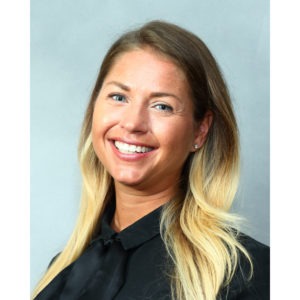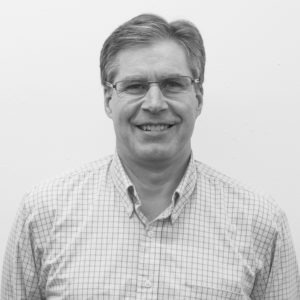Environmental sustainability by design for assisted living
When The Shelter Group made plans to develop the 90-unit Brightview South River assisted living community in Anne Arundel County, Md., their primary goal was to fill a noticeable gap in long-term care services in the central part of the state. When the facility opened in December 2011, it earned praise from elected officials and the community for meeting the needs of area residents. It was also recognized for something not typically associated with LTC facilities—environmental sustainability.
From the outset, the leadership at Shelter was committed to constructing the facility to meet LEED (Leadership in Energy and Environmental Design) certification requirements set by the U.S. Green Building Council. While environmental impact and sustainability have always been priorities for Shelter, the complex at South River serves as a pilot for their Brightview Portfolio to evaluate the benefits and challenges of developing LTC communities that meet LEED certification.
This project took Shelter’s commitment to developing communities that are energy efficient and sustainable in ways that contribute meaningfully to the lives of their residents to the next level.
Many developers of LTC facilities have yet to master the balancing act between sustainability and economic benefit. As architects for the project, the Hord Coplan Macht team was delighted to meet this challenge and to continue our 25-plus year relationship with Shelter.
The HCM team was eager to leverage our experience and expertise in healthcare, multi-family housing, senior living communities and sustainable design projects to help maximize the environmental benefits of the design and to optimize the operational benefits and subsequent economic benefits of the LEED features.
Through the combined efforts of Shelter, Hord Coplan Macht and the contractor for the project, Harkins Builders, we were able to not only achieve LEED certification minimum standards, but Brightview South River was recently awarded LEED Gold Certification. Brightview South River is the first senior living building in the entire state of Maryland to earn LEED Gold certification.
PRACTICAL SUSTAINABILITY PRACTICES
The focus on reducing the environmental impact of the facility began with the 3.52-acre site itself. The project site includes 44 percent open space and 53 percent of the site has native and adaptive planting, which preserves natural areas and promotes biodiversity. The plantings also help reduce the use of potable water for irrigation by 82 percent, which reduces water bills significantly.
Not all of the plantings on the property are at ground level. Two of the rooftops on the three-story facility are green or “living” roofs covered with soil and planted with a variety of low-maintenance grasses and plants that reduce water runoff and boast other environmental benefits. The balance of the rooftops are reflective, which along with the vegetated roofs, helps to reduce the “heat island effect” that accounts for higher temperatures in urban areas.
While the LEED elements found on the exterior of the building are important, many of the environmentally friendly features that have the most impact are found indoors. Low-emitting materials were specified throughout the interior of the building. These materials release little or no harmful indoor air pollutants. Americans spend an average of 90 percent of their time indoors where levels of pollutants may run two to five times–and occasionally more than 100 times–higher than outdoor levels. Shelter found their efforts to reduce indoor pollutants have definitely struck a chord with the families of residents and employees at South River.
The design of the building also makes the best use of natural light in the spaces where residents live and employees work. Seventy-nine percent of the regularly occupied spaces in the complex have access to daylight and 92 percent of spaces have views and connections to the outdoors. Exposure to natural light not only offers both mental and physical health benefits, but it also reduces energy use by 15-18 percent.
Further energy saving measures were taken into account when designing the HVAC system and selecting appliances. The facility was outfitted with an energy efficient building envelope and HVAC system, and Energy Star appliances are in place throughout. Energy Star appliances use anywhere from 15-50 percent less energy than standard appliances and washing machines and dishwashers use up to 55 percent less water when compared to minimum federal standards.
Low-flow plumbing fixtures were installed and as a result, Brightview South River is projected to use 43 percent less water thanks to the efficient faucets, toilets, shower heads and washers (in addition to the reduced usage from the efficient landscaping).
Recycling of plastics, paper products and glass is made easier at Brightview South River through the placement of recycling collection and storage areas. A solar-powered waste compactor reduces the volume of trash and saves energy.
The design of the facility also promotes environmentally friendly modes of transportation. From bike racks and changing areas for cyclists to special parking spots for carpoolers and fuel efficient cars as well as an electric vehicle charging station, Brightview South River rewards employees and visitors that utilize alternative modes of transportation.
Another sustainability feature that benefits South River residents and staff is the close proximity to numerous basic services in the community. Directly adjacent to the facility is a 26-acre development, The Villages at Lee Airport, which offers a wide variety of retail, restaurant and entertainment options.
EDUCATING STAFF AND RESIDENTS
While The Shelter Group was confident the market in central and southern Maryland was educated and aware enough of LEED standards to appreciate the results of their efforts, they worked with the team at Hord Coplan Macht to communicate the specific environmental benefits of the LEED features. Prominent signage is in place throughout the facility and grounds to educate residents, their families and the staff on the specific environmental impact of each design feature. In addition, the signs offer tips on how individuals can reduce their impact on the environment by using less water, less energy and decreasing their carbon footprint.
CREATING A VIBRANT COMMUNITY
Reducing environmental impact and earning LEED certification were driving forces in the design of this project. However, meeting the diverse and evolving LTC needs of the residents at South River was always the overarching goal.
Above all, the design of Brightview South River set the stage for the facility’s dedicated staff to provide a vibrant living experience for the residents that best contributes to their physical and emotional well-being.
The nearly 68,000-square-foot community includes an apartment mix designed to best meet the needs and budgetary requirements of residents. Brightview South River incorporates studio, one-bed and unique two-bed assisted living residential apartments. Market research revealed that a higher than usual percentage of married couples are looking for assisted living opportunities. The variety of residential options at South River can accommodate both single and married residents’ needs throughout their lifetime.
Large windows, bright color schemes and upscale interior décor, including several two-sided stone fireplaces, contribute to a decidedly non-institutional and home-like feel in the design and layout.
Amenities include an elegant dining room, a café, brain fitness room, exercise/therapy room, a network of outdoor walking paths and a gazebo, as well as other spaces that accommodate social and recreational activities and foster interaction and a sense of community.
Of Brightview South River’s 90 units, 26 are specifically designed for residents with Alzheimer’s disease and other cognitive impairments. They reside in a separate wing, called the Wellspring Village, which provides specific accommodations to meet their personal care and ambulatory needs. Studio apartments offer safe and familiar surroundings and secure outdoor areas allow for exercise and interaction with other residents and caregivers.
BALANCING ENVIRONMENTAL & ECONOMIC BENEFITS
LEED certification is by no means a new concept, but in the LTC industry, many owners and operators have been tentative to embrace the concept and make it work on a large scale.
The increased construction and design costs of LEED-certifiable features are the largest impediment for facilities. The Shelter Group estimates that meeting LEED certification requirements added approximately $100,000 to the budget for Brightview South River. Not an insignificant expense by any means, but The Shelter Group deemed it a worthy investment.
While the facility has been open for just six months, the reduced environmental impact is already paying dividends in lowered operating costs, including reduced water and energy costs, and increased goodwill from residents and the community at large. The environmentally conscious design also resonates with the adult children of residents
The Shelter Group continues to evaluate the cost-benefit of LEED certification requirements and based upon the achievements at South River have updated their sustainability guidelines and plan to put them in place throughout the Brightview Portfolio.
Shelter remains committed to sustainable design in their communities and continues to be a trailblazer in the LTC industry in developing vibrant, engaging communities that incorporate and emphasize environmental sustainability in the everyday lives of residents and staff.
In addition to The Shelter Group, Hord Coplan Macht and Harkins Builders, the project team for Brightview South River included:
Civil Engineering : JBA Inc.
Landscape: Floura Teeter
MEP: Century Engineering
Interior Designer: Aumen Asner
Structural: Wolfman and Associates
Commercial Kitchen: Clark Food Service
Cynthia Shonaiya, AIA, LEED AP BD+C is a Principal in the Multi-family and Sustainability Studios with Hord Coplan Macht (www.hcm2.com) an architecture, landscape architecture, planning, interior design and sustainable design firm located in Baltimore, Md. and Alexandria, Va. She can be reached by phone at 410-837-7311 or email cshonaiya@hcm2.com. Photography by Kevin Weber.
I Advance Senior Care is the industry-leading source for practical, in-depth, business-building, and resident care information for owners, executives, administrators, and directors of nursing at assisted living communities, skilled nursing facilities, post-acute facilities, and continuing care retirement communities. The I Advance Senior Care editorial team and industry experts provide market analysis, strategic direction, policy commentary, clinical best-practices, business management, and technology breakthroughs.
I Advance Senior Care is part of the Institute for the Advancement of Senior Care and published by Plain-English Health Care.
Related Articles
Topics: Articles , Design











